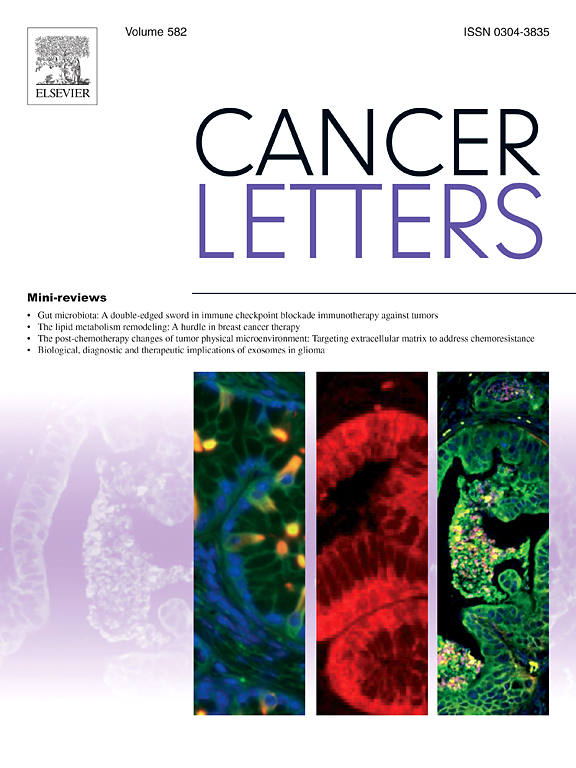通过跨时间上下文图模型解读胰腺导管腺癌对化疗的单细胞水平反应。
IF 9.1
1区 医学
Q1 ONCOLOGY
引用次数: 0
摘要
吉西他滨通常用于胰腺导管腺癌(PDAC),这是最致命的癌症类型之一。然而,耐药是改善PDAC化疗的关键挑战。在这里,我们对PDAC患者来源的异种移植(PDX)模型应用单细胞RNA测序(scRNA-seq)来研究与吉西他滨耐药相关的复杂细胞反应。为了从这些静态scRNA-seq快照中重建动态肿瘤细胞反应,我们提出了scConGraph,一种可扩展的双层图模型,可以有效地整合跨时间上下文信息。基于scConGraph,我们观察到茎秆性和内质网应激有助于内在抗性。至于获得性耐药,癌细胞可能通过激活细胞周期、进入静止状态或诱导上皮-间质转化来抵抗或逃避吉西他滨治疗。值得注意的是,GDF15在获得性耐药细胞亚群中表现出反复和显著的上调。实验验证证实,抑制GDF15使肿瘤细胞对吉西他滨增敏,提示吉西他滨诱导的化疗耐药的潜在靶点。本文章由计算机程序翻译,如有差异,请以英文原文为准。
Decipher the single-cell level responses to chemotherapy in pancreatic ductal adenocarcinoma by a cross-time context graph model
Gemcitabine is commonly used for pancreatic ductal adenocarcinoma (PDAC), one of the most lethal cancer types. However, the drug resistance is a critical challenge for improving the PDAC chemotherapy. Here, we applied single-cell RNA sequencing (scRNA-seq) on PDAC patient-derived xenograft (PDX) models to study the complex cellular responses related to the gemcitabine resistances. To reconstruct dynamic tumor cell responses from these static scRNA-seq snapshots, we proposed scConGraph, a scalable bi-layer graph model that can efficiently integrate cross-time context information. Based on scConGraph, we observed that stemness and endoplasmic reticulum stress contribute to intrinsic resistance. As for acquired resistance, cancer cells may resist or evade gemcitabine treatment by activating the cell cycle, entering quiescence, or inducing epithelial-mesenchymal transition. Notably, GDF15 exhibited recurrent and significant upregulations among acquired-resistance cell subpopulations. Experimental validation confirmed that inhibiting GDF15 sensitizes tumor cells to gemcitabine, suggesting a potential target for gemcitabine-induced chemoresistance.
求助全文
通过发布文献求助,成功后即可免费获取论文全文。
去求助
来源期刊

Cancer letters
医学-肿瘤学
CiteScore
17.70
自引率
2.10%
发文量
427
审稿时长
15 days
期刊介绍:
Cancer Letters is a reputable international journal that serves as a platform for significant and original contributions in cancer research. The journal welcomes both full-length articles and Mini Reviews in the wide-ranging field of basic and translational oncology. Furthermore, it frequently presents Special Issues that shed light on current and topical areas in cancer research.
Cancer Letters is highly interested in various fundamental aspects that can cater to a diverse readership. These areas include the molecular genetics and cell biology of cancer, radiation biology, molecular pathology, hormones and cancer, viral oncology, metastasis, and chemoprevention. The journal actively focuses on experimental therapeutics, particularly the advancement of targeted therapies for personalized cancer medicine, such as metronomic chemotherapy.
By publishing groundbreaking research and promoting advancements in cancer treatments, Cancer Letters aims to actively contribute to the fight against cancer and the improvement of patient outcomes.
 求助内容:
求助内容: 应助结果提醒方式:
应助结果提醒方式:


